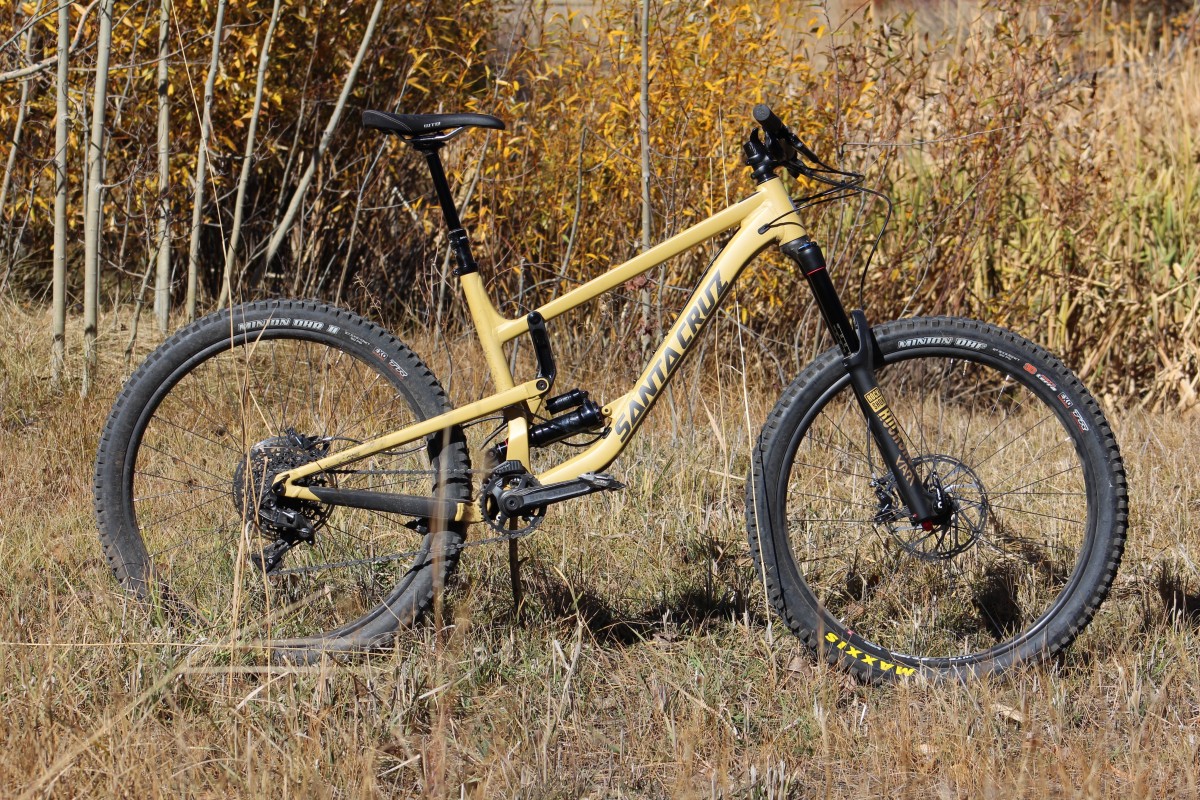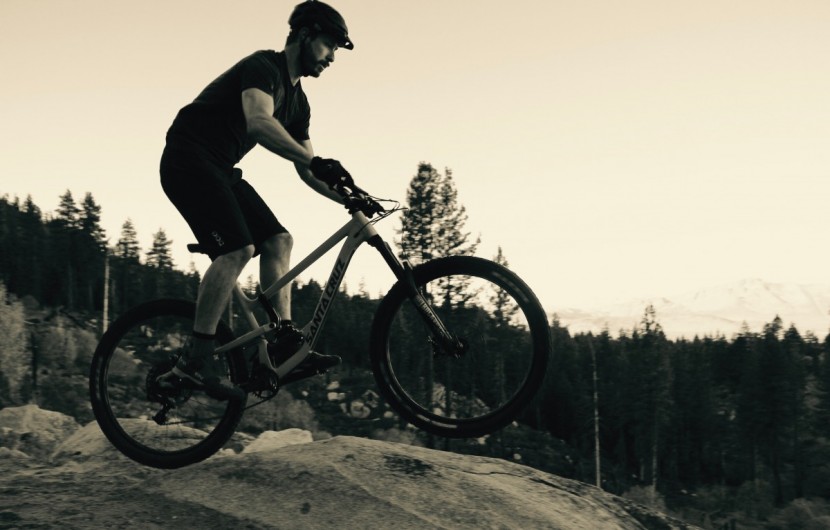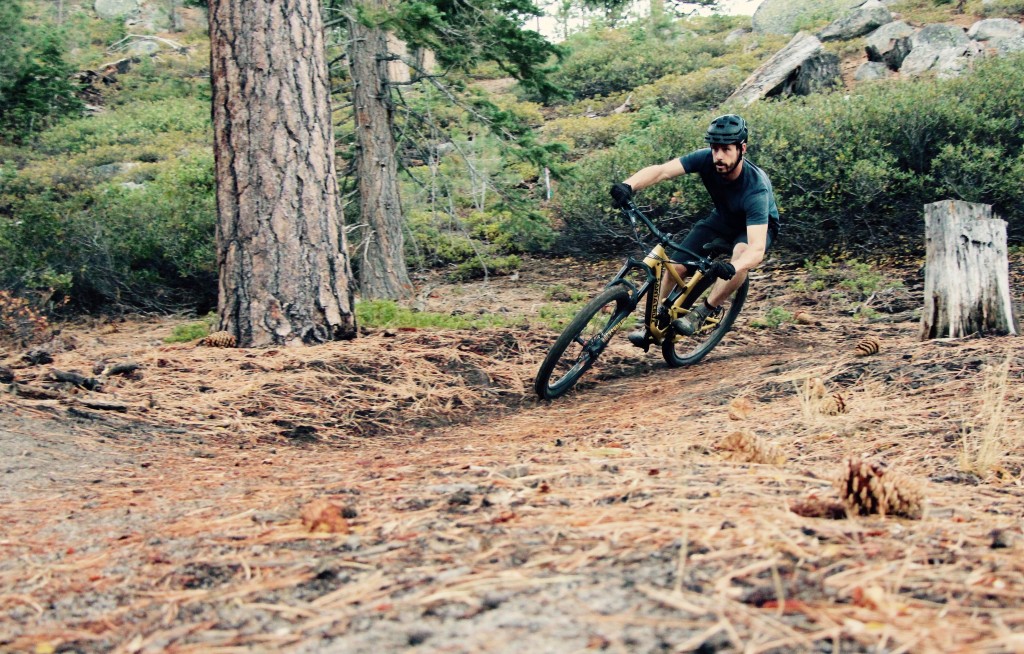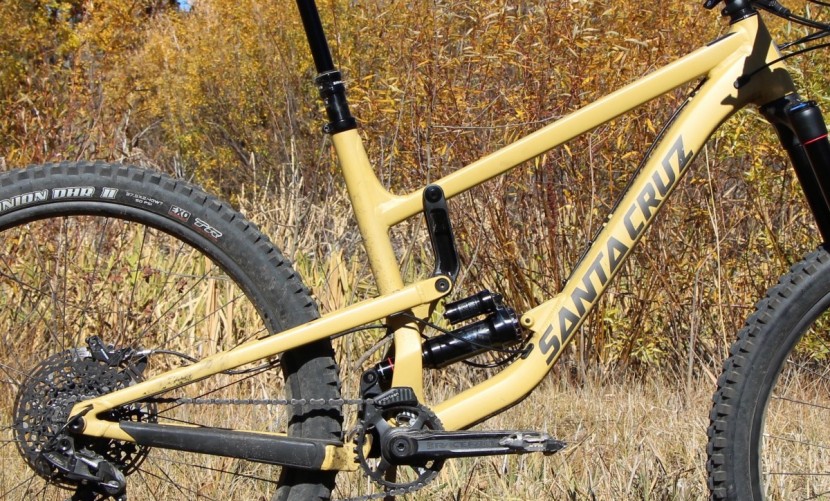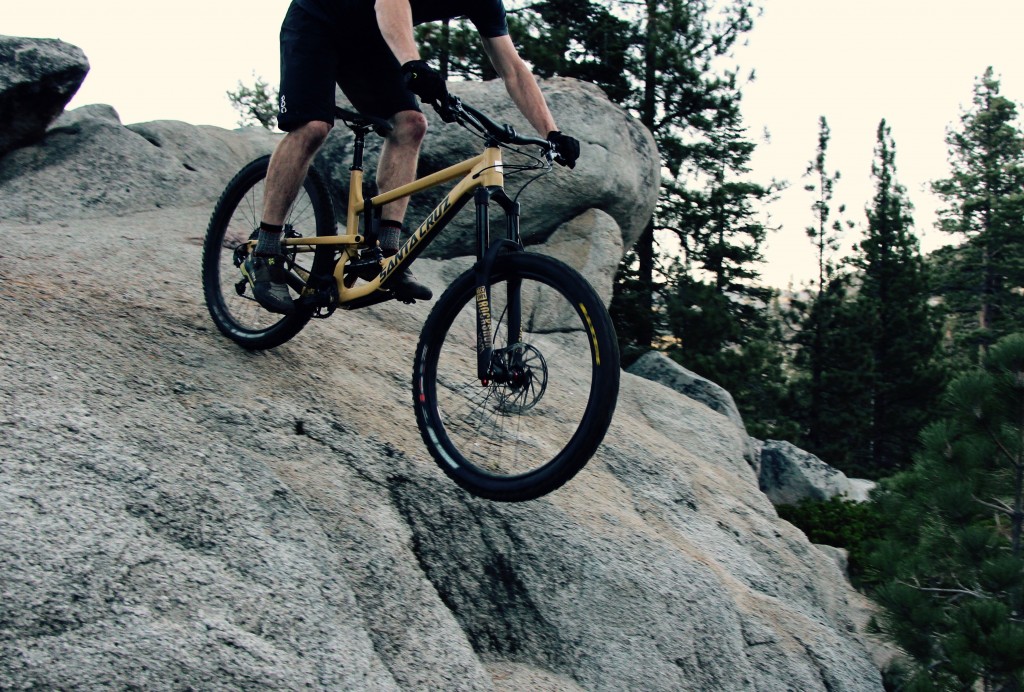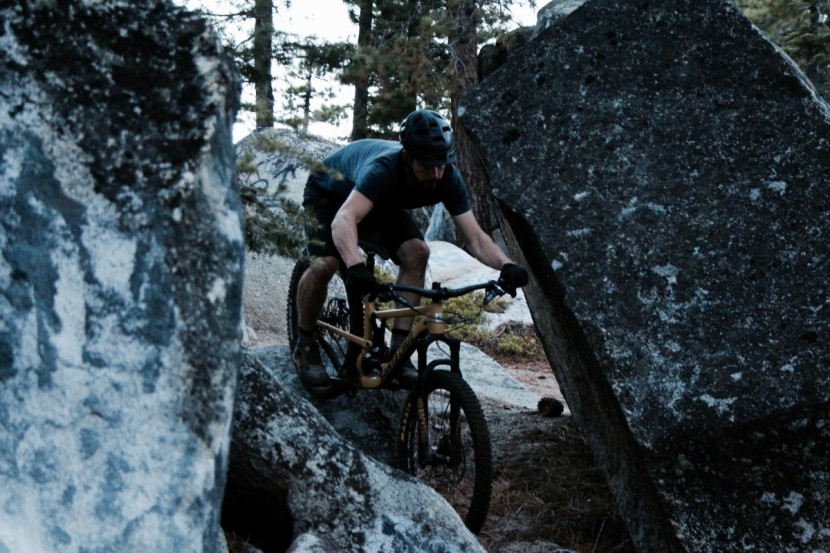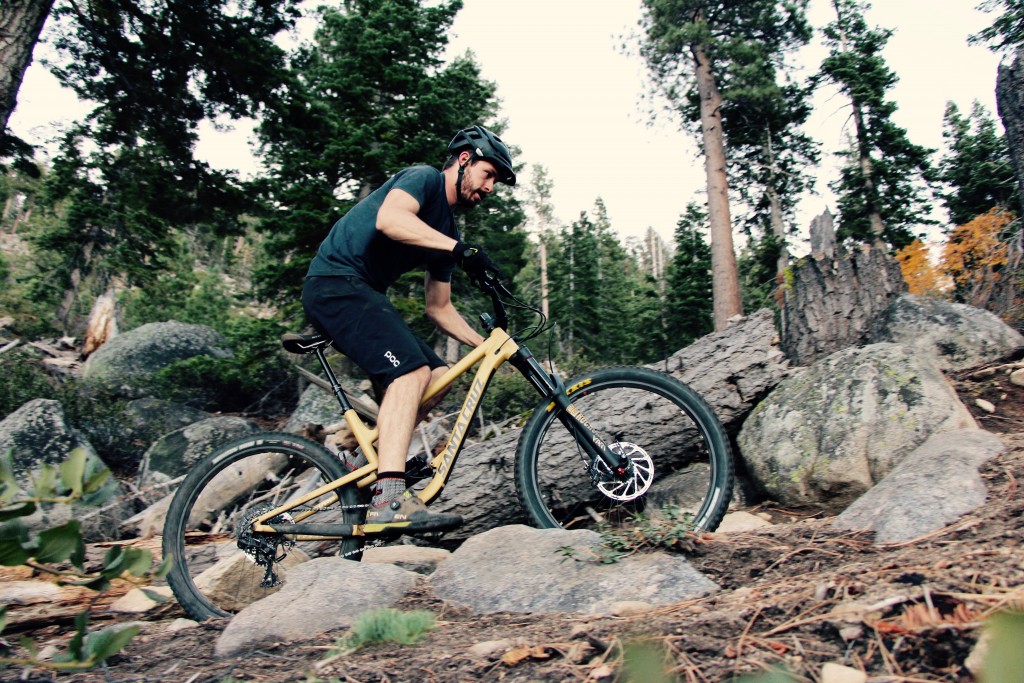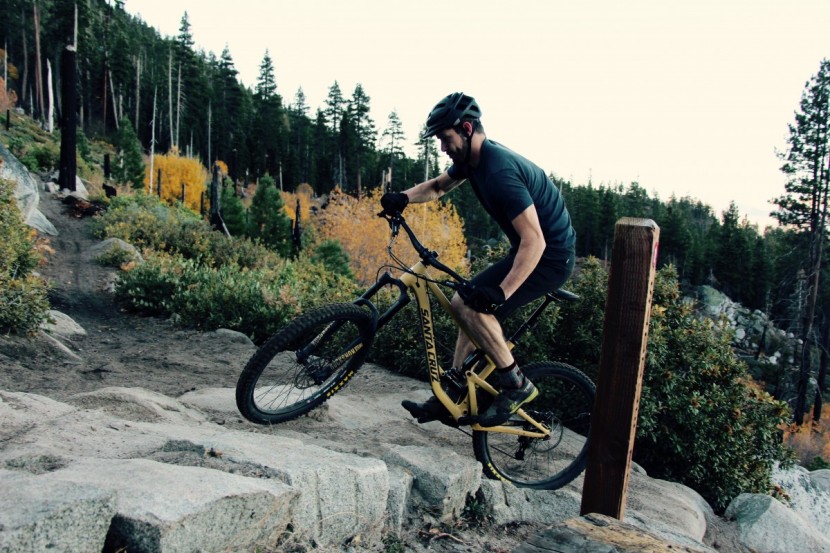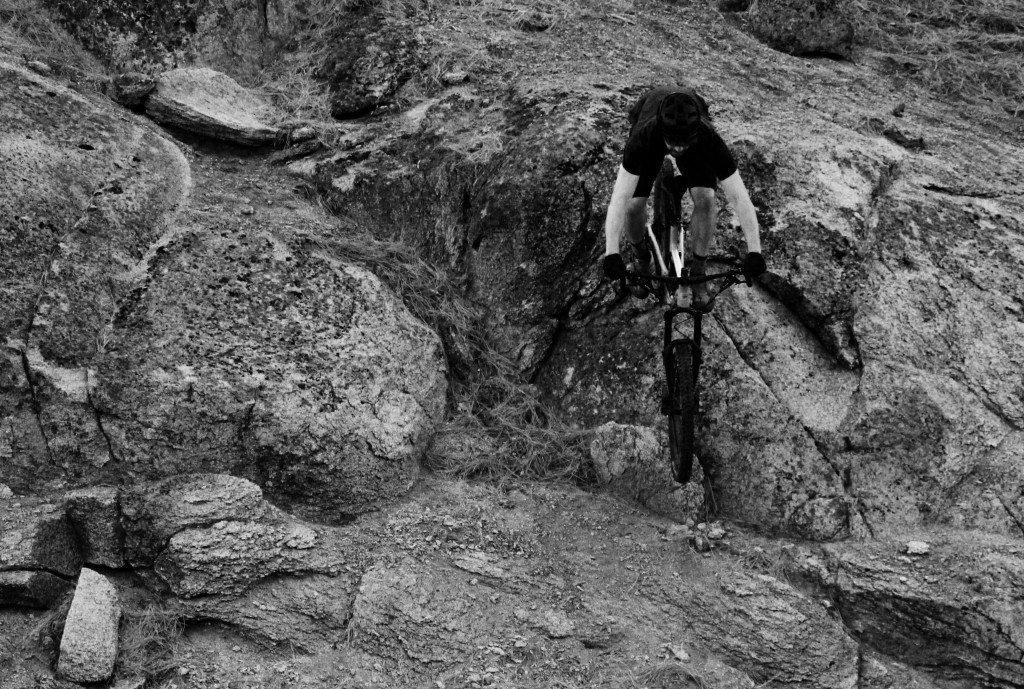Santa Cruz Nomad R 2018 Review
Our Verdict
Our Analysis
Should I Buy This Bike
According to the Santa Cruz website, the Nomad V4, “pushes the envelope of how DH a bike can get while remaining usable on most trails.” This sand-colored slayer pushes the downhill envelope. Testers reminisced that this Nomad is every bit as capable than their 200mm downhill bikes from earlier this decade. We take issue with Santa Cruz's assertion that this bike is, “usable on most trails”. A monster truck is usable on the freeway, but it would be a terrible experience. The Nomad is energy-zapping, boring and tremendously sluggish on the average trail ride. There is no-doubt the Nomad is a niche bike with very specific talents. You should buy this bike if you live for downhill riding and have no problem spending more energy to creep back up the hill. This would also be a tremendous second bike/gravity weapon for those with a short-mid travel trail bike.
In search of a hard-charging long-ish travel bike with significantly better climbing abilities? The 29" wheeled Ibis Ripmo might not charge quite as hard on the descents but it goes uphill way better and has a much more well-rounded performance than the Nomad. The Ripmo is only available in carbon fiber and its 29 lb 7 oz weight makes it feel more light-footed on the ascent. It also stays higher in its travel, making it feel more efficient. The Ripmo features 145mm rear wheel travel and a 160mm travel fork. The Ripmo is impressively capable on the descents, plus it has a much sportier and energetic feel that performs well in a much broader range of terrain and speeds. The GX build we tested comes thoughtfully spec'd with a trail-worthy build for $5,099.
Want a better balance of climbing and descending abilities? The wagon-wheeled Santa Cruz Hightower LT can scale mountains with ease while maintaining an aggressive personality downhill. This versatile 150mm travel bike requires a significantly more finesse than the Nomad and does have a gnar limit. That said, it is comfortable blasting out all-day rides with occasional days at the bike park. The Hightower LT XE sells for $5,699 and features a Fox 36 Performance Elite fork, Fox DPX2 shock, and XT 1x11 drivetrain.
Frame Design
The Santa Cruz Nomad V4 features 170mm of rear-wheel travel via the Virtual Pivot Point (VPP) suspension design. The new shock mounts to the lower link and is reported to tuck weight away lower in the frame. Adjustable geometry on the rear shock mount flips between low and high geometry settings. We rode our test bike in both. With a bike this burly, we preferred to cut loose and ride in the low setting.
This frame is available in aluminum, carbon fiber and Santa Cruz's Carbon CC. Carbon CC is the higher-end carbon fiber that offers the same frame stiffness at a slightly reduced weight. The weight difference is under a half-pound per frame. Our large aluminum R build weighs 33 lbs 2 oz without pedals.
We measured our size large test bike. In the high setting, it has a 65.3-degree head tube angle and 76.1-degree seat tube angle. The 624mm effective top tube and 428mm chainstays work to create a 1220mm wheelbase. The reach is 463mm, and the bottom bracket height is 342mm. In the low setting, we measured a 64.8-degree head tube angle and 75.5-degree seat tube angle. The 627mm effective top tube 430mm chainstays create a 1222mm wheelbase. The reach shortens to 458mm, and the bottom bracket drops to 336mm.
Santa Cruz Nomad V4 Highlights
- Available in aluminum, Carbon C, and Carbon CC
- 170mm of rear-wheel travel, comes stock with 170mm fork
- 27.5-inch wheels only with max tire clearance of 2.5-inch
- BOOST Spacing
- Frame only options w/ shock: Aluminum $1,999. Carbon CC $3,299
- Complete bikes: Seven build kits from $3,599 for Aluminum R to $8,199 for Carbon CC XX1
- Sizes available: XS-XL
How We Tested
Two OutdoorGearLab testers spent a week smashing the 2018 Santa Cruz Nomad R up and down the longest technical and rocky descents. We tried our darndest to find the upper gnar limits for this aggressive bicycle.
Ride Impressions
A quick glance at the travel and geometry numbers on the redesigned Nomad 4 and its intended application should be crystal clear. This bike is designed to go downhill. Fast. This stupendous shredder lives for big burly lines and creates unrivaled stability at ultra-high speeds. This sendy bicycle certainly blurs the line of a freeride or park bike. Inevitably, you will need to get back to the top of the downhill that you just demolished. Climbing this 33+ lb bicycle takes a relaxed attitude and calm approach. The climbing motion is somewhat reasonable considering how rowdy it can get on the descent. It takes some serious effort to move such a long, low and bulky bike uphill. It is worth it.
Downhill Performance
Aiming the Nomad down ugly downhill trails is a sublime experience. The composure with which this bike can handle high speeds and chunk is ludicrous. The Nomad delivers dual-crown-esque performance in a more nimble and fun package. The rear end is particularly difficult to disturb and offers the level of plushness you would expect in a 170mm travel bike.
The undeniably aggressive angles on this Santa Cruz work. Plain and simple. When aimed down nasty rock gardens or chutes, the rider is put in a comfortable attack position with that front axle way out ahead of your hands. We should note, that given this slack geometry, this bike needs to be driven at speed to activate far more responsive handling. Slow speeds make this bike feel cumbersome and sluggish. When you hit a certain speed, responsiveness and handling skyrocket. Given its length and heft, we don't consider the Nomad to be especially playful, but at higher speeds this bike is incredibly obedient. Less and less rider input and body language is required as velocity increases.
Charging through rocks and roots is calm and stable. The reworked shock placement lowers the center of gravity and borrows heavily from the design of the V10, Santa Cruz' downhill bike. According to the designers, the new Nomad has a more linear shock rate to allow for, “feather-light small bump sensitivity.” Testers agree the latest iteration has a far better small bump feel than most other Santa Cruz bikes we have tested. The suspension feels calm and muted when motoring through braking bumps and roots.
The downside? This bike sags deeper into its travel on smaller impacts than the Nomad 3. While it is clear the new version deemphasizes pedaling, this can be sketchy when mashing the cranks. The measured 336mm bottom bracket in the low setting isn't crazy low. Standing downhill pedal loads drops the suspension deeper into its travel, and lowers the bottom bracket significantly. As a result, riders must be careful when slipping in pedal strokes. A clipped crank or pedal will take you down in a hurry at 30mph. Trust us. We found out the hard way.
On local trails, we never found the high-end limit of the Nomad. Sure, aiming it down double-black diamond DH race courses might feel under gunned at times. That said, bike park trails are getting flowier and faster, and a bike like this makes sense for the modern gravity fiend. Easier to handle, more fun and versatile than a pure downhill bike, this is an excellent option for the shuttle or bike park enthusiast. The Nomad is likely overkill on the the vast majority of downhills found on most public trail networks.
The component specifications on this $3,599 gnar-sled complement its attitude beautifully. The 170mm RockShox Yari RC is mean and stiff. Still, There is no mistaking this fork for a smooth and plush Fox 36, or even its big brother, the Lyrik. The Yari has the same body as the Lyrik but features the Motion Damper instead of the Charger 2 damper on the Lyrik. It is definitely harsh early in the stroke, but it holds a line and never shies away from action. The RockShox Super Deluxe rear shock is easy to set up, and the rebound knob is extremely easy to work with on the fly. A 2.5-inch Maxxis Minion DHF up front and Minion DHR II 2.4-inch in the rear is a perfect specification. The SRAM Guide R brakes are predictably solid.
Climbing Performance
Climbing a 33 pound, 170mm, bike is never going to be all that pleasant, or fast. Slow speed steering is sluggish, and slack geometry is not conducive to great power transfer. The right state of mind is required to pilot this bike uphill. That said, if we consider how capable this bike is on the descent, it's all worth it.
Uphill handling is tricky. Powering up and over obstacles requires a great level of caution to keep your pedals from smashing rocks. Line choice is critical. On the plus side, the long-running length does give a nice rock-crawling stance in the right situations. Just keep the pedals spinning and go right up and over. Tight uphill switchbacks are difficult. It is important to keep an eye on your front wheel as it is inclined to wander. There are some switchbacks that require a perfect entrance to successfully navigate.
Settling into a climbing position on the Nomad is interesting. The pedaling position is more upright and over the cranks than we would have anticipated on such a slack bike. Pedal strokes through technical trail sections need to be carefully planned, as the bottom bracket is low under sag. One tester ran 30% sag, and one ran somewhere between 35-40% which affected bottom bracket height.
The RockShox Super Deluxe R does not have a climb switch. The higher-end Super Deluxe RC3 does have a three-position climb switch. If there was ever a time to need a firmed up rear end, it is when you're climbing on a 33 lb, 170mm travel, bike. Still, the suspension is firm under seated pedaling loads. A quick glance down towards the shock reveals minimal bounce or movement. Road climbs are more pleasant and mindless, just sit down and spin it out. There is pedal bob under standing pedal forces, more than we experienced on the Nomad V3.
The 30:42-tooth gearing on the SRAM NX gearing is okay. This bike would greatly benefit from a 12-speed SRAM Eagle drivetrain. The Nomad takes a lot of energy to power uphill and an extra climbing gear sounds lovely. This is where a relaxed and unhurried attitude is beneficial. Trying to hustle uphill only costs you valuable energy that you will want to save for the downhill.
Photo Tour
Value
The $3,599 price tag on our aluminum Nomad R makes for a great value. No, the components aren't sexy or flashy, but this they work. This bike offers extremely high-end performance within its intended application.
Build Highlights
- RockShox Yari RC Fork - 170mm Travel
- RockShox SuperDeluxe R Shock
- SRAM NX 1x11 Drivetrain
- SRAM Guide R
- E*Thirteen Chain Guide
- WTB ST I25 TCS rims with Novatec hubs
- Maxxis Minion DHF 2.5 front tire, Maxxis Minion DHR II 2.4 rear tire
Conclusion
The Santa Cruz Nomad V4 produces an unbelievably capable and confident downhill experience that spikes as speed increases. This gnar smasher offers a tremendously, perhaps unrivaled, downhill performance for a bike that still retains some climbing abilities. The Nomad is a niche bike with a narrow market. That said, it does its job stunningly well.


